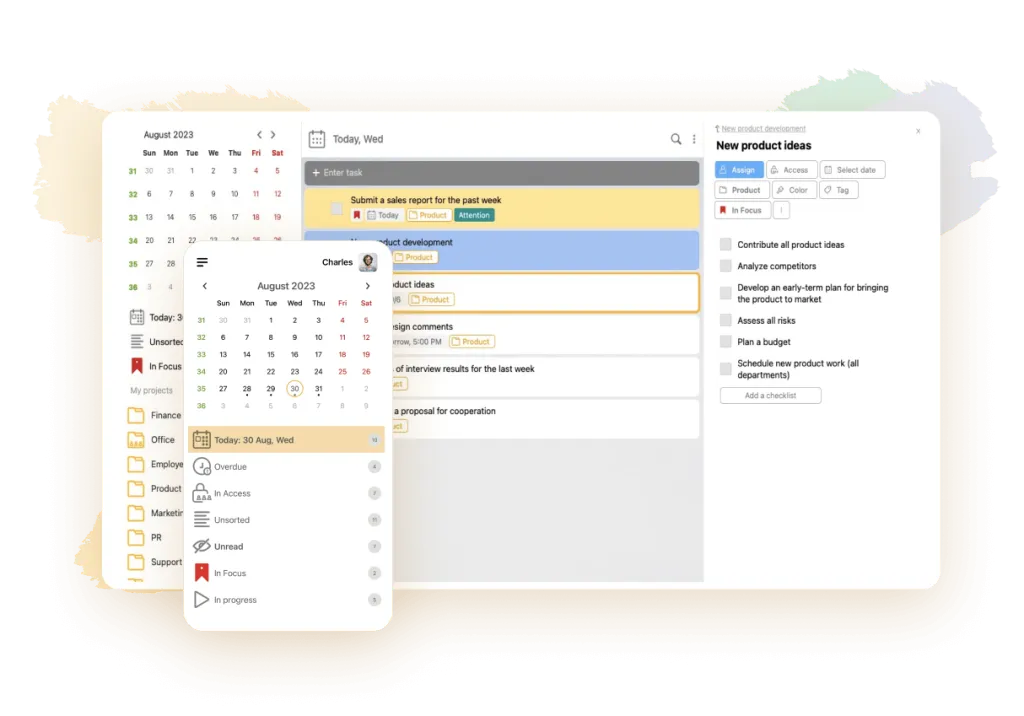
Ted Scott
December 27, 2023
Personnel is a big deal. You can’t argue with that statement. You can come up with an original business idea, develop an excellent product, but you will get nowhere if other performers refuse to participate in your project. Forcing them to do something by force is useless and unprofessional. You need to look for suitable “levers”, motivators that will push them to perform their tasks quickly and efficiently.
Personnel motivation is an effective, efficient tool for any manager. It helps to achieve business goals in a timely manner and to increase the company’s profits. Let’s find out how to use it to achieve the planned results.
What is motivation
Motivation is a system of tangible and intangible methods of influencing people. These are certain actions of the manager that help subordinates feel their value and importance. Realizing that they are important to the company, employees try to perform the work assigned to them qualitatively and on time. For this they receive some encouragement, which becomes a new impetus for moving forward. Motivation of personnel labor performs the following tasks:
-
Prevents employee turnover and helps maintain a permanent staff;
-
Helps to attract qualified and experienced professionals to the company;
-
Encourages employees to work for the benefit of the company and support its interests;
-
Promotes quality and productivity.
Motivation helps to increase sales, improve other key business indicators. It increases the loyalty and interest of employees. They like to do their work, enjoy it, demonstrate their professional skills and abilities. It positively affects the psychological atmosphere within the work team, promotes cohesion and effective teamwork. Allows to optimize all basic business processes for better management of the company at all levels.
What an incentive system consists of
In most cases, the HR department of a company is in charge of developing motivational measures. But in practical conditions the tasks of motivation and organization of personnel work lie with managers.
The system of motivation of employees in the organization is a set of measures that stimulate initiative and desire to work. It consists of two main elements: compensation and non-compensation system:
| The compensation system includes: | A non-compensatory system includes: |
|---|---|
| Wages, employee’s temporary disability payments, overtime pay, redundancy payments, insurance benefits. | Programs aimed at professional development, development of intellect, erudition. Activities that promote staff self-esteem. Corporate events for team building. Setting goals, objectives to employees, control of their fulfillment. |
Implementation of the employee motivation system takes place at the global and individual level. First, methods are developed to influence the entire team. Then individual methods of motivation are selected, taking into account the peculiarities of the character, temperament and needs of each employee.
For the system to work effectively, it is important to correctly formulate the company’s goals and link bonus indicators to them. They are determined based on the company’s performance and are calculated quarterly, monthly or annually.
Types and methods of employee motivation

Motivation can be tangible or intangible.
-
Tangible motivation includes all incentives, bonuses, bonuses, training discounts, vacations, and fines and penalties.
-
Intangible motivation includes developing a comfortable schedule for employees, improving working conditions, career advancement, and support from management and mentors.
It can be seen that the ways of motivation echo the basic human needs described in Maslow’s pyramid. It is based on physiological needs and security. Each person needs to eat, buy clothes, pay for housing, rest, feel confident in the future. Therefore, employees, first of all, need to provide decent wages, comfortable working conditions and stability. And after that to take care of their personal growth. An employee will feel good in a company where his or her following needs are met:
-
Good paycheck;
-
Stable company with comfortable working conditions;
-
Opportunity for professional growth;
-
Feeling of own value, importance for the company;
-
Simple, straightforward assignments commensurate with qualifications and experience;
-
Useful, meaningful work;
-
Care from management, improving work processes;
-
Socializing with educated, interesting, pleasant people.
Of course, material methods almost always work without fail. No employee would refuse a raise or an additional bonus. But, according to statistics, dissatisfaction with salary is the reason for only 60% of dismissals. The remaining 40% are due to intangible factors related to the undervaluation of employees’ labor. Intangible rewards can dramatically change this situation. They can be:
-
Renaming the position. For example, the position “cleaner” in the staff list can be successfully replaced by “cleaner” or “cleaning specialist”, and the impersonal position of “manager” can be formulated as “project manager”.
-
Supporting team spirit in the team by organizing joint events, games, quests. Regular meetings to discuss current issues, personal conversations between employees and the director.
-
Comfortable workplace conditions. In a hot, stuffy or cold room, workers cannot be expected to be productive. For productive and active work they need to create the right conditions. Select quality lighting, take care of maintaining a comfortable temperature. Consider the possibility of arranging a recreation area with a coffee machine, organizing the delivery of lunches to the office to ensure full nutrition of employees.
-
Training, staff development can be organized on site, in the form of online courses or trainings. Or send promising specialists to appropriate courses.
-
Career development opportunities. A far-sighted manager should draw up an individual plan for each employee, taking into account his or her capabilities, and supervise its execution. It is important that the performer should also soberly assess his strengths. He should realize that, having got a job in the company as a courier, he cannot claim the position of the head of the department in a month. This requires appropriate qualifications and experience. The career of subordinates in the company can develop horizontally. No business is interested in a large number of managers. Experienced, strong experts who are well versed in their field are of great value to it.
-
Gamification. A good way of non-material motivation of personnel, helping to unite the team and increase the interest of performers in routine work.
-
Balance of labor and rest. Without quality rest, employees will not be productive. But, unfortunately, representatives of professions whose salary depends on the result often refuse to take vacations and days off in order to achieve the cherished KPI indicators. This leads to burnout, stress, fatigue. A good manager is quite capable of building a work process in such a way that it does not interfere with a normal, fulfilling life outside the office.
By the nature of its impact, motivation can be positive and negative. In the first case, positive incentives (rewards) are used to stimulate personnel. The second type of motivation implies the use of negative methods of influence (punishments, fines).
A distinction is made between external and internal types of personnel motivation. External motivation implies an approving influence on the personnel. Internal motivators are personal qualities present in every person. Performing certain tasks qualitatively and professionally, receiving adequate and commensurate payment for it, he/she feels moral satisfaction and gets an incentive to work even better.
Intangible motivation happens:
-
Psychological. These methods of influence are aimed at forming a favorable atmosphere in the team, trust between subordinates and the manager.
-
Social. This includes health insurance and staff career development.
-
Moral. It is based on satisfying the need for recognition. It can be expressed verbally or through specific actions on the part of management (photo on the honor board or corporate portal).
-
Organizational. It includes activities to improve the workplace.
Motivational video for employees
Quite often the manager does not communicate with any department or does not communicate with employees for a long time, goes on business trips and leaves. This is especially aggravated when a certain part of employees work remotely. Employees do not know or forget about the goals of the company that the manager wants to convey to them. Usually, the classic solution to such a problem is a meeting. But in such a case it will not be possible to gather all employees in one place. The solution may be to record a motivational video for employees.
In the video, you can address everyone, a specific department or employee. Encourage, point out points of growth, and reiterate the goals your company is working toward. Post the video to a shared chat room. This will help boost team spirit and focus on what’s important right now.
Non-standard methods of personnel motivation
One of the unusual ways of motivation was invented by the famous cartoonist Walt Disney. Today it is used in many Western and domestic companies. It is called the “ambition game”. Over the years, Disney managed to accumulate a kind of empire, in which some positions were considered prestigious, and others - unpopular with performers. The last thing people wanted was to take jobs in laundromats. So he renamed them “textile services.” Apart from the name, nothing changed, but there were many more people who wanted to work in such a department, because they did not differ in importance from other departments.
When designing motivation programs, it is important to consider employee temperament. Choleric people approach work differently from melancholic or sanguine people. Phlegmatics also have their own peculiarities. This does not mean that any temperament is worse or better. Just the advantages and strengths of each of them can be used for the benefit of the company. In order not to long to understand the peculiarities of personality, you can conduct psychological testing in the team.
To increase motivation, you can use an internal reward system based on a corporate program in which each employee can leave feedback on the work of his or her colleague. For this purpose, you can use a messenger, corporate chat or team management application.
At the end of the month, successful employees can be rewarded, but not with money, but with pleasant gifts. For example, organize a visit to a spa or a visit to a restaurant. And be sure to thank the staff for their achievements. This can also be done in a creative way. For example, allow them to leave early or come later than usual to work. Or invite them to attend an important meeting. There is no need to be shy about showing personal interest and attention. This will be a great incentive to work hard.
What is the difference between motivation and incentives
Motivation is a complete system that includes a set of measures to improve personnel performance. It is based on clear evaluation criteria and economically justified approaches. Stimulation of employees is one of the additional tools of personnel management based on external influence on the performer.
Examples of motivation:
-
Photo of the best workers on the honor board.
-
Additional salary supplement when sales plan is exceeded.
-
Bonus in the amount of double salary for the best work at the end of the quarter, year.
Examples of incentives:
-
If the plan is not met, employees forfeit their bonuses.
-
Prohibited from leaving the workplace until the annual report is completed.
Effective team management with LeaderTask

Dynamic market conditions require managers to be active, mobile and organized. While management of small companies is rarely a problem, large businesses require automation of all processes, including work with employees. One of the most effective tools for personnel management is the LeaderTask electronic application.
The program solves many personnel problems on a qualitatively new level. It can be used for labor team planning, studying the performance, efficiency of employees and their motivation.
In the application you can assign tasks to performers, control their fulfillment. Identify inefficient employees, track the efficiency of all team members on an informative graph. Discuss current issues in a convenient corporate chat room. Monitor the speed of work on tasks, use a system of rewards and penalties for deadline failures.
LeaderTask is a functional, cross-platform program with a simple, intuitive interface that works on all digital platforms. It works effectively without the Internet, in offline mode. It has a high-quality, fast mobile version.
Conclusion
Employee motivation is an effective, really working tool that positively influences the work of personnel. It can have a material or non-material character. But money is far from being a decisive factor in encouraging people to work better. The modern generation is not ready to “give their life” to work even for a lot of money. They prefer a comfortable, healthy atmosphere in a company to high earnings.
It is nice for a person to feel like a full-fledged member of the team, not a faceless cog in a soulless mechanism. Only normal team relations, personal peace of mind, and confidence in the future will encourage employees to achieve the company’s goals.
The need to change the motivation system may arise when the company’s activities change, when there is a high turnover in certain departments, when employees burn out.
To achieve the best effect, different methods of motivation are combined in such a way that employees want to stay with the company for a long time. For this purpose, it is necessary to review bonus criteria, analyze and improve the motivation system every three months.








